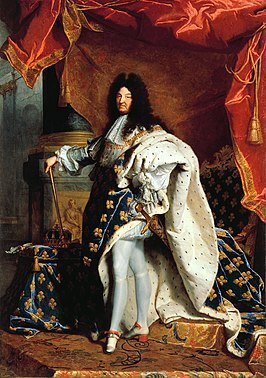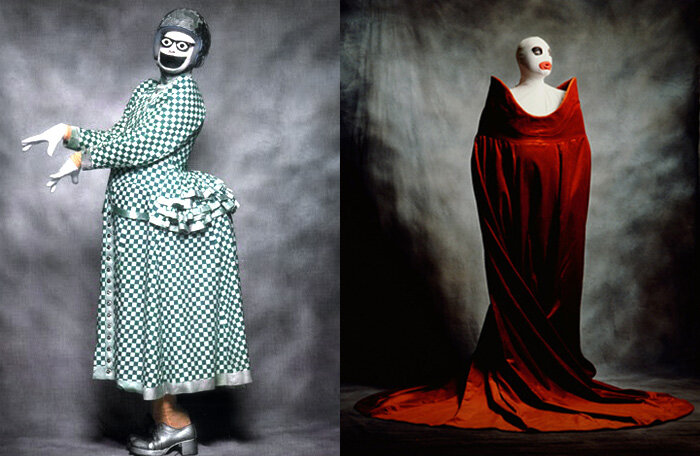A Camp comeback
Camp, the history
First things first… what is camp? Most of us think of “camp” as synonymous with “kitsch” - a humorous type of kitsch, an aesthetic so overproduced that it does not fail to make us laugh.
While this much is true, the “camp” aesthetic (or should we say movement?) has a long history rather more complex and sophisticated than just for our entertainment.
In 1909, the Oxford English Dictionary gave the first printed definition of camp as “ostentatious, exaggerated, affected, theatrical; As a noun: 'camp' behaviour, mannerisms, et cetera; a man exhibiting such behaviour”. According to the dictionary, the word is "etymologically obscure". Camp in this sense has been suggested to have derived from the French term se camper, meaning "to pose in an exaggerated fashion".
Look at Miss Sun King. Work.
This early definition of camp already predicts the two strands of ‘camp’ that have formed throughout history. One is closely tied to the behavior of ‘certain men’ (read: effeminate gay men). While the other focuses on the ‘dramatic, the exaggerated, the theatrical’. Both, however, are aesthetic or a ‘sensibility’.
First and foremost, Camp was a general description of the aesthetic choices and behavior of gay men. Opposed to ideas of how men ‘should’ act, always too outlandish, too theatrical, too much flair. Oscar Wilde, with his larger-than- life-mentality and his emphasis on style, is a good example of this.
In the 20th century, camp came to represent the aesthetics of working-class gay men. This ‘camp’ attitude was originally a distinctive factor in pre-Stonewall gay male communities, where it was the dominant cultural pattern. Here, gayness meant effeminacy - two key components of camp were ‘feminine’ performances, after all: ‘swish’, or the extensive use of superlatives, and ‘drag’, an art form of exaggerated female impersonation.
Camp, the heist
In this way, camp as an aesthetic became extended to all things "over the top'', including women posing as female impersonators (faux queens), like in the Hollywood version of Carmen Miranda. It was this version of the concept that was adopted by literary and art critics and became a part of the conceptual array of 1960s culture.
To make things worse, in 1964, Susan Sontag published ‘Notes on Camp’, in which she defined the camp sensibility for a straight audience by offering a series of different meanings and connotations. Or as Moe Meyer puts it:
“In 1964 camp was propelled into public consciousness via Susan Sontag’s now famous essay, ‘Notes on Camp’, with its homosexual connotations downplayed, sanitized and made safe for public consumption.”
Completely decoupled from gayness, camp became for everyone to use. It appeared in many types of entertainment and in art in general. As an aesthetic, it relied on ‘artifice, exaggeration, irony and bad taste’ and in this way, it actually disrupted many of modernism's notions of what art is and what can be classified as high art, by inverting aesthetic attributes such as beauty, value, and taste.
However, this subversiveness was not transferred to spheres other than the art world. In terms of identity, collective movements or society in general, camp was redefined to an apolitical aesthetic, unable to be anything other than light-hearted and devoid of meaning.
“By removing, or at least minimizing, the connotations of homosexuality, Sontag killed off the binding referent of Camp—the Homosexual—and the discourse began to unravel as Camp became confused and conflated with rhetorical and performative strategies such as irony, satire, burlesque and travesty; and with cultural movements such as Pop.” - Moe Meyer
Tell me this isn’t the most pop camp thing you’ve ever seen.
Reclaiming Camp
So, if camp as an aesthetic serves just about anything, why are we talking about it? Why is a tired aesthetic adopted by the straights™ worth mentioning? In the past decades, camp has been reclaimed by queer artists and theorists. An important theorist for the revival of queer camp, we’ve already mentioned here is Moe Meyer. However, theorists like Halberstam and Butler have always fought the apolitical character of ‘pop’ camp.
We just googled ‘straight’ for this one.
Moe Meyer defines camp as "queer parody", in opposition to the aforementioned popularization and “mainstreaming” of camp in the sixties. Here, camp regains a queer perspective that is critical of dominant culture. In some ways, queer camp takes camp even further than the original gay camp. Let us explain.
The subversiveness of early camp largely emerged out of the fact that it was equated with the behaviour of (effeminate) gay men. Gay men being loud? Stylish? Theatrical? That’s a powerful thing in an environment that frowns upon this kind of behaviour and makes a habit out of ostracizing the ‘transgressor’. Here, being unapologetically gay is a radical act. Making your (sexual) identity eye-catching, extraordinary, and memorable, while living in a society that would rather pretend it does not exist? That’s subversively rejecting and disrupting dominant values.
This, too, is present again in queer camp. Think for example of movies like The adventures of Priscilla, Queen of the desert. It portrays queer identity unapologetically. It uses queer references and ‘subtilities’ to highlight what it is to be queer (and proud of it). It asserts ‘queer’ as its own subculture, very different from the heteronormative dominance, but never less.
“Camp answers heterosexual disapproval [of queerness] through a strategy of defensive offensiveness . . . incarnating the homophobe's worst fears, confirming that not only do queers dare to exist but they actively flaunt and luxuriate in their queerness” - Andy Medhurst
Queer camp is not only adversarial to mainstream society just by daring to exist. No, its irony and over the top parody are also a means to poke fun at our heteronormative culture. It highlights the ridiculousness of assuming the average human being - or better yet the ideal human being - as white, straight, middle class, monogamous, and gender conforming. Films like ‘But I’m a cheerleader’ actively ridicule the assumptions and expectations straight people have of gay and trans people.
So...there’s that. The likes of Vogue and the NY Times persist, to this day, to defining camp by Sontag’s writings. But then again, they would.
With this quick rundown of camp’s complex definition and colorful history, let’s take a look at The Ultimate Camp Hero.
The Ultimate Camp Hero: Leigh Bowery
Described as “A walking artform”, Leigh Bowery is arguably one of the most creative individuals of the late 20th century. Originally from Australia, but later established in London, Leigh was a performance artist, club performer and fashion designer - on top of that hailed to be ‘the ultimate camp hero’.
Just a quick glance at Leigh’s work, attitude, and lifestyle will show how freely he lived his life. Existing in spaces which he felt most comfortable and appreciated such as queer scenes and nightclubs - he was a host of the notorious underground nightclub ‘Taboo’ (until it closed in 1987 due to the drugs and AIDS crisis).
Leigh mentioned during interviews that he hated going to normal places such as the markets or corner stores because he felt he would be ridiculed and the amount of work he put into his looks would go unappreciated. His life was cut short in 1994 when he died of an AIDS-related complication at the age of 33.
“Leigh Bowery created outfits that made him look deformed, which was very brave. I believe this was the main thing that gave Leigh his edge. His designs were often breath-taking, but it was the way he used his body that was so utterly new and refreshing.”
— Boy George
Girl look at you, grab a mirror:
Camp has been described as a sensibility, theatrical, an exaggeration of proportion, form, the body -- esoteric. It was also synonymous with gayness for the majority of its (short) existence. All of these definitions can easily be found within the work of Leigh Bowery.
Leigh Bowery at The Clothes Show
Leigh used unconventional materials to create his pieces and obscured his face with masks, dramatic makeup, and items (such as light bulbs.) By creatively introducing new silhouettes and playing with his body proportions, Leigh was a living, breathing piece of performance art. He embodied the spirit of camp. He has been credited with inspiring the works of artists and designers such as Vivienne Westwood, Alexander McQueen, David LaChapelle, John Galliano, The Scissor Sisters, and Boy George. Just watch the unforgettable performance he gave at Wigstock in 1994 where he iconically gave ‘birth’ on stage and goes on to chew off the umbilical cord with his teeth. Truly ahead of his time.










